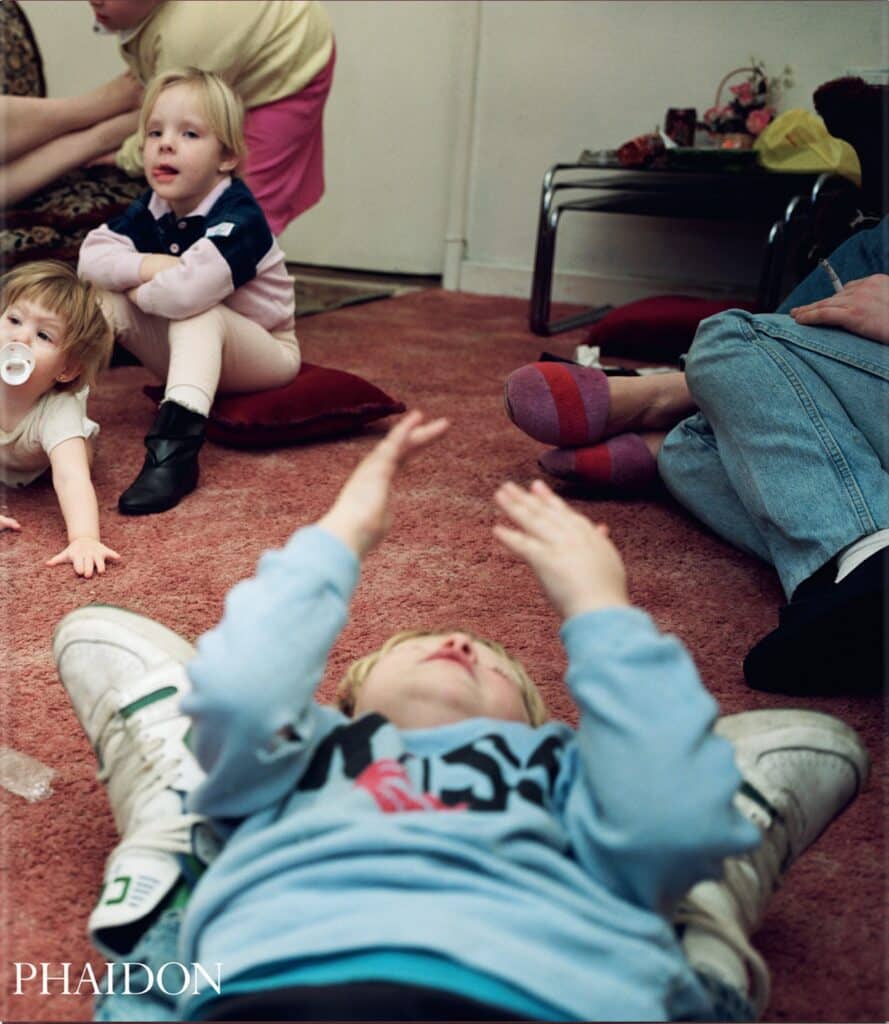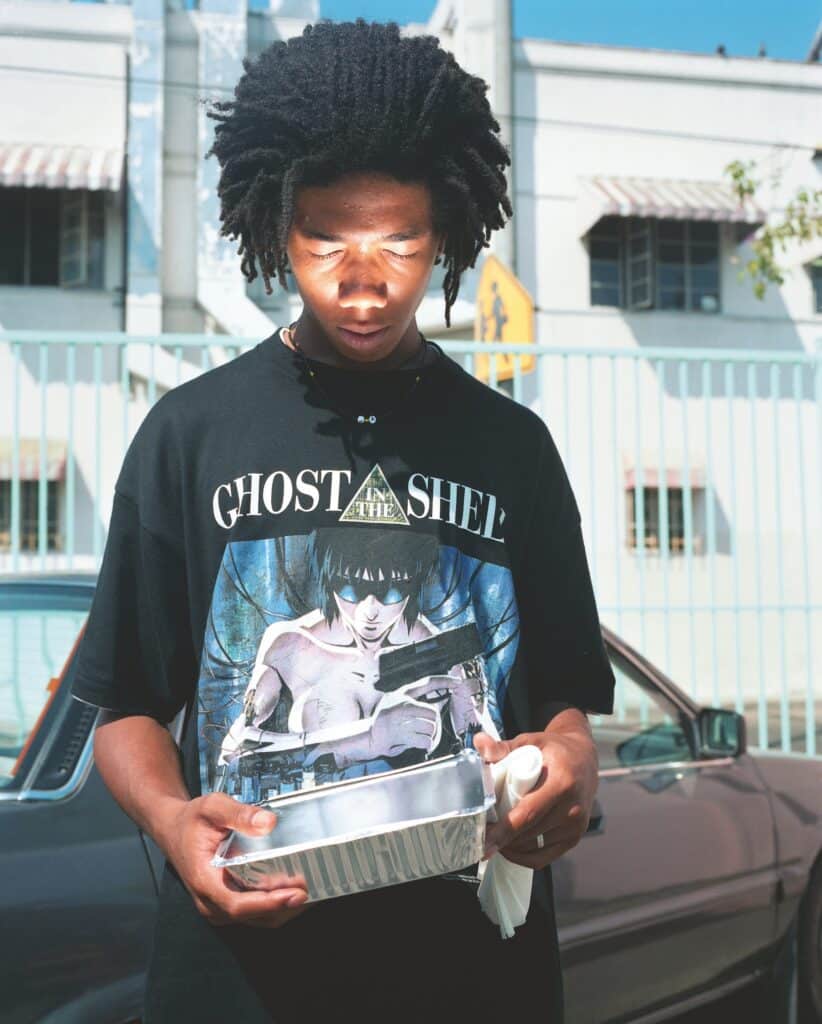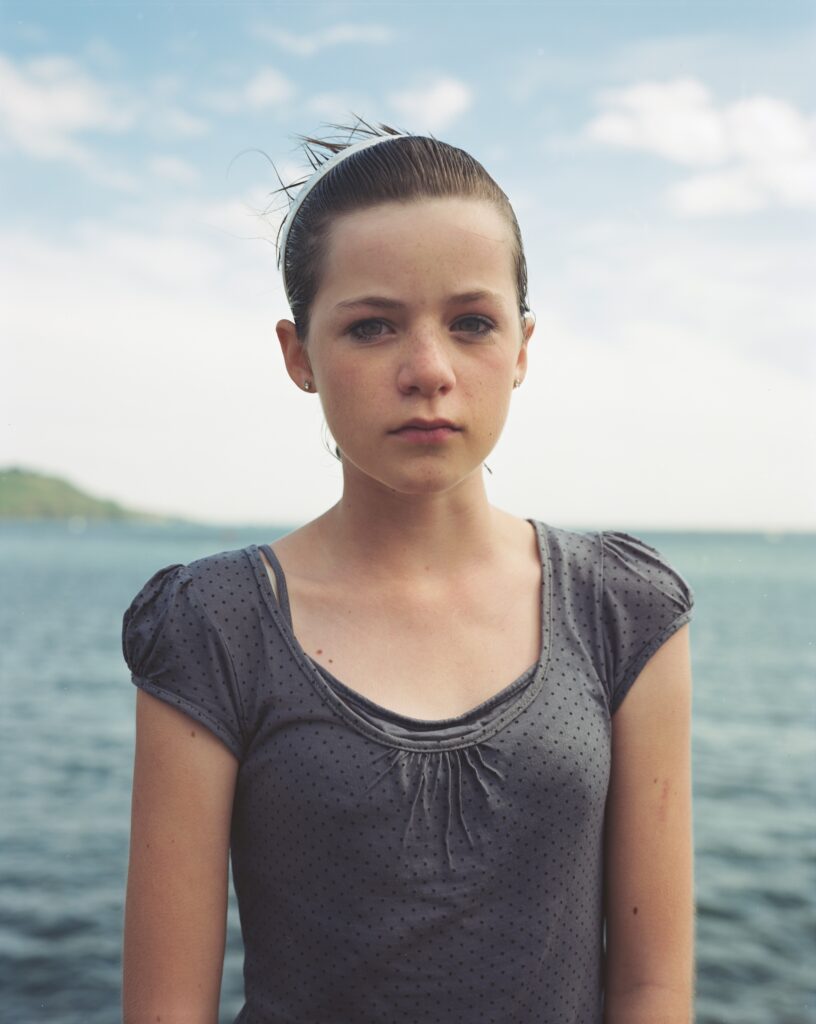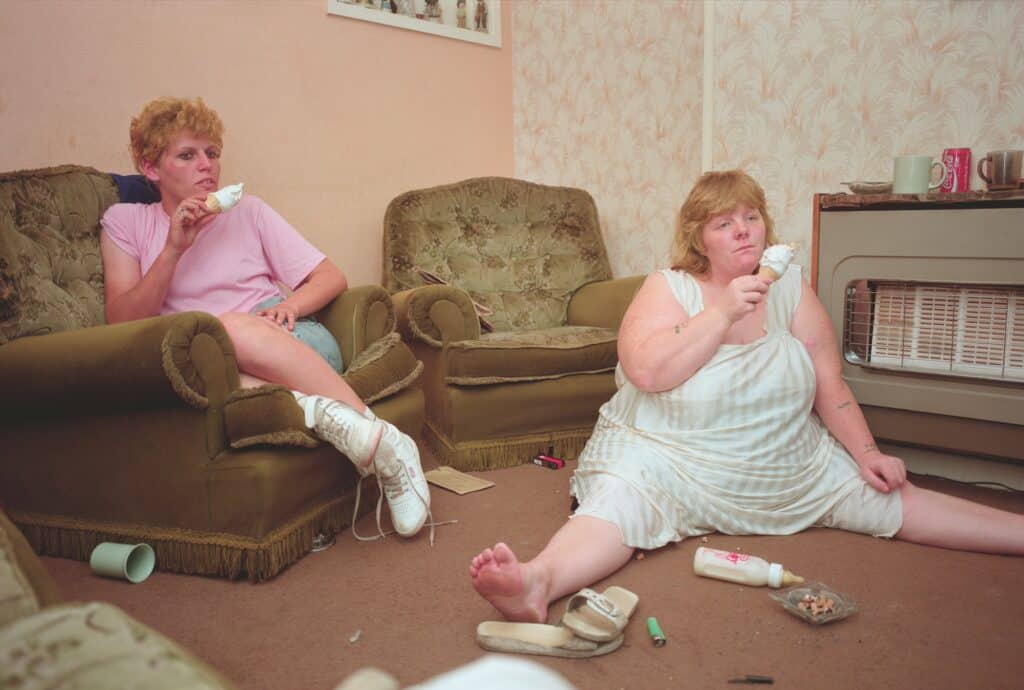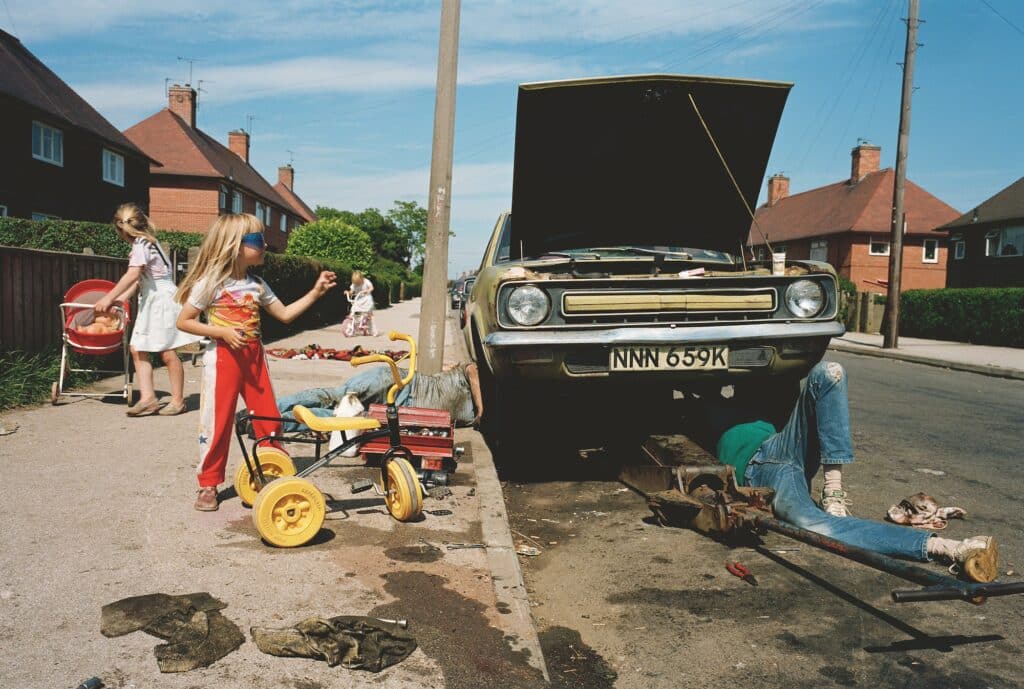Although time may be linear, life is a series of revolutions spinning around the sun, our path becoming a spiral where the past, present, and future insistently overlap. But like the flatness of the earth, it’s difficult to perceive the curve without the benefit of distance, which accords a wider view.
With the retrospective, artists can stretch time across space to consider the shape of their work, both as a chronological progression as well as an autobiographical tale. For British photographer Nick Waplington, the story begins long before he was born, on the Broxtowe council estate of Nottingham built between the wars, where his grandfather lived for half a century.
Many residents works in the coalmines, a brutal and unforgiving job — but his father seemingly escaped by benefit of education. He became a nuclear scientist, ushering in a new age of “safe” energy that proved anything but. Waplington was born in Aden, Yemen, in 1965, and traveled extensively with the family before returning to the UK in the 1970s.
As the nation plunged into political and economic turmoil, young Waplington fell in with an older crowd that introduced him to the sound of rebellion: punk rock. It was a natural fit for the young skateboarder, who embraced the DIY spirit of times. He started drawing covers and designing layouts for local fanzines before joining a band called Totally Devoid. As the voice of the dispossessed, punk radicalized a new generation of youth like Waplington, who attended Rock Against Racism carnivals and marches to support the Campaign for Nuclear Disarmament.
“It was a time of resistance and rebellion in squats, university campuses and teenage middle class bedrooms. There was also the apartheid in South Africa, and Thatcher had called Nelson Mandela a ‘terrorist,’” Waplington told i-D. “There was a constant 24-hour protest outside, and I would go and lend support on a regular basis. Of course, I always had my camera in hand.”
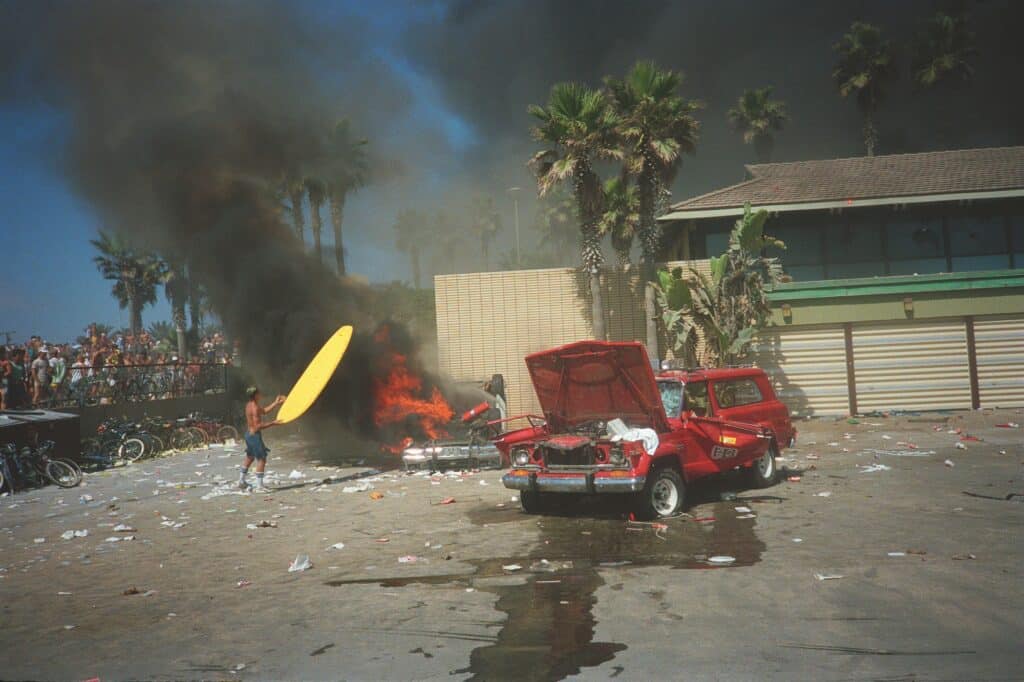
Redefining the Landscape of Art
In 1986, Nick Waplington began bringing his camera on visits to his grandfather’s home on the Broxtowe council estate, photographing the local community. The work began to take shape as he focused on a couple, Janet, her children, friends, and new husband Clive, over a period of 15 years that resulted in two books, Living Room (1991)and Weddings, Parties, Anything (1o995).
It is here that the new book, Nick Waplington: Comprehensive, begins as a poignant reminder of just how radical it was to tell it like it is. Stripped of the veneer of polite society and respectability politics, Waplington chronicle of working class families and communities weren’t necessarily “pretty” so much as warm, filled with an absolute lack of self-consciousness that rattled the plumed feathers of the petty bourgeois.
Charges of “exploitation” were leveled against the photographer for showing working class folks simply existing without pretense. They were overweight, untidy, and unreserved, wholly disinclined to moderate any casual vulgarity for the camera. To those who measured human value by performative displays of custom and mortality, Waplington had done the unthinkable: he had scandalized their virgin eyes by suggesting unvarnished disarray might be considered art.
To his credit, Waplington paid them no mind. He began traveling to places where such displays were de rigeur, like the legendary New York nightclub scene of the early ‘90s. Inside Sound Factory, Jackie 60, and Save the Robots, freaky reigned supreme. All races, ethnicities, genders, and sexualities were welcome to present themselves however they pleased.
Here, nudity was simply part of one’s look, and to be honest, most folks were too busy slipping K-hole or peeking on ecstasy to be concerned. Waplington’s work for Weddings, Parties, Anything suddenly made perfect sense.
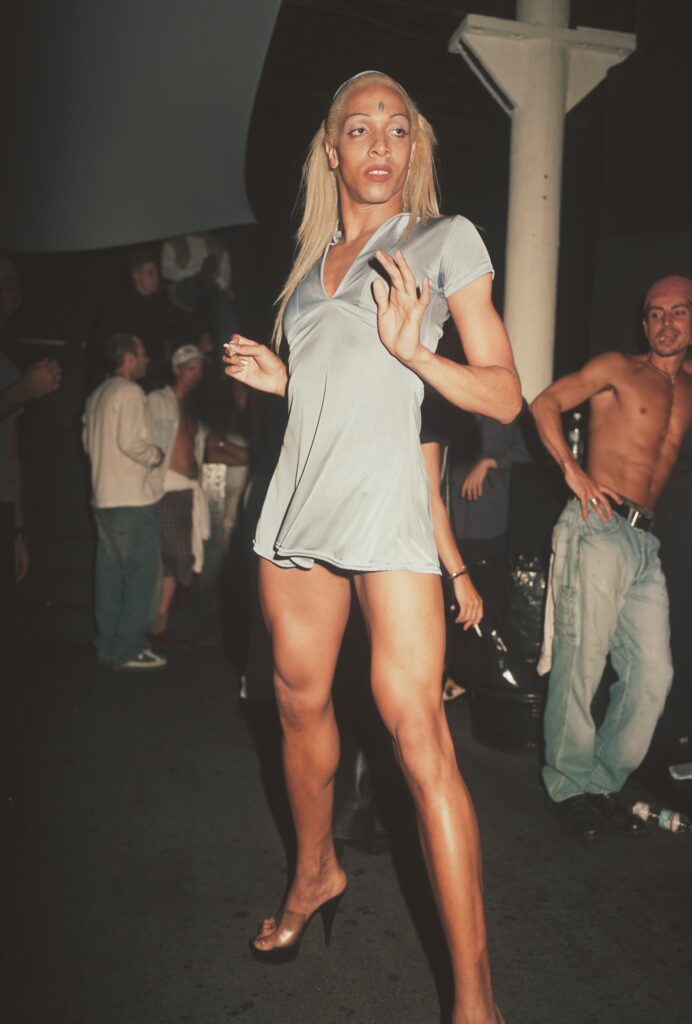
Coming Around Again
During the 1990s and 2000s, Nick Waplington traveled the globe, amassing an extraordinary wealth of works showcased in Comprehensive. He told layered stories in single photographs collected in the chapter “Individual Works,” as well as immersive series like “West Bank Projects” in 2008 which explored the harrowing impact of apartheid on Palestinians struggling to survive in their ancestral lands.
The following year, Waplington returned to his childhood home to spend time with his father, who was dying from cancer. Surrounded by artifacts of his youth, Waplington began to create “Made Glorious Summer” (2014), an exploration of time, memory, and loss that reveal the ways in which our life unconsciously moves in a spiral.
Here, past and present circle each other forming a future untold, but allowing us to consider the way in which our passions cast patterns across the soul. As with all of Waplington’s work, it reminds us that the answers we seek may be found in outside our assumptions, biases, and judgments about the nature of life itself.
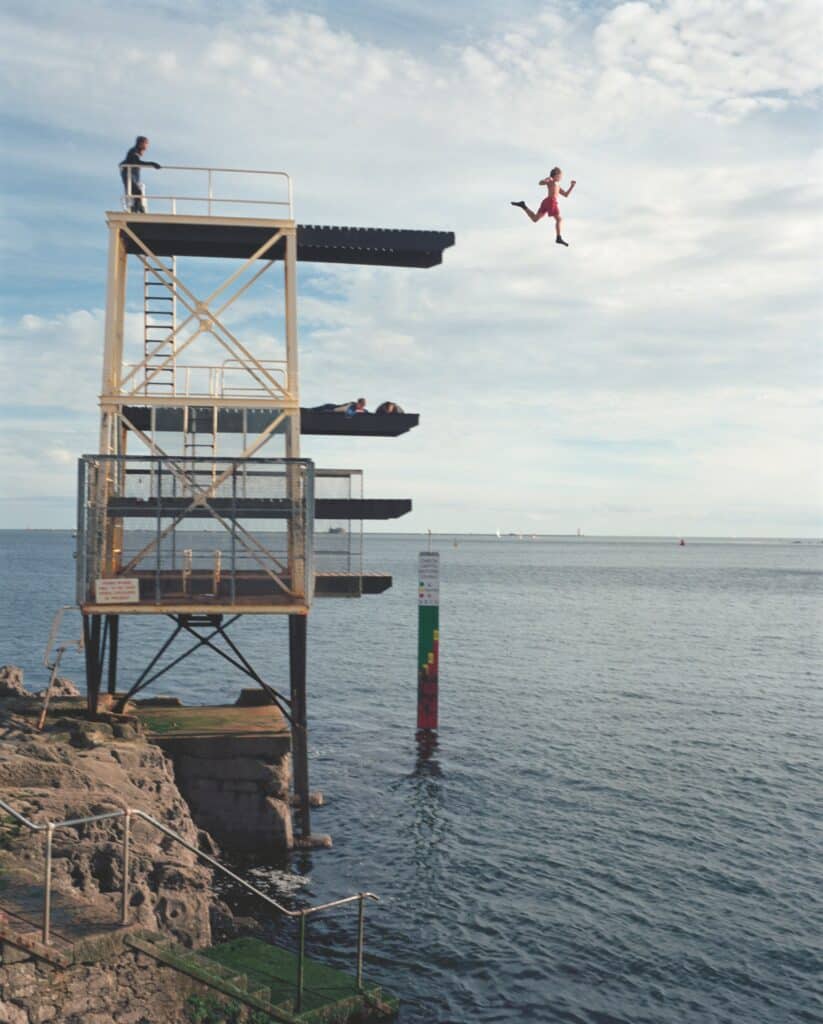
Nick Waplington: Comprehensive is published by Phaidon, $89.95
